POLARIS RANGER 1000 EPS
— Testing the Ranger 900’s replacement —
Why did Polaris drop the Ranger XP 900, the all-time, top-selling utility UTV from its 2020 lineup? They feel like they’ve got something better—the new Ranger 1000—and we got to drive it. Here’s what you need to know about it.
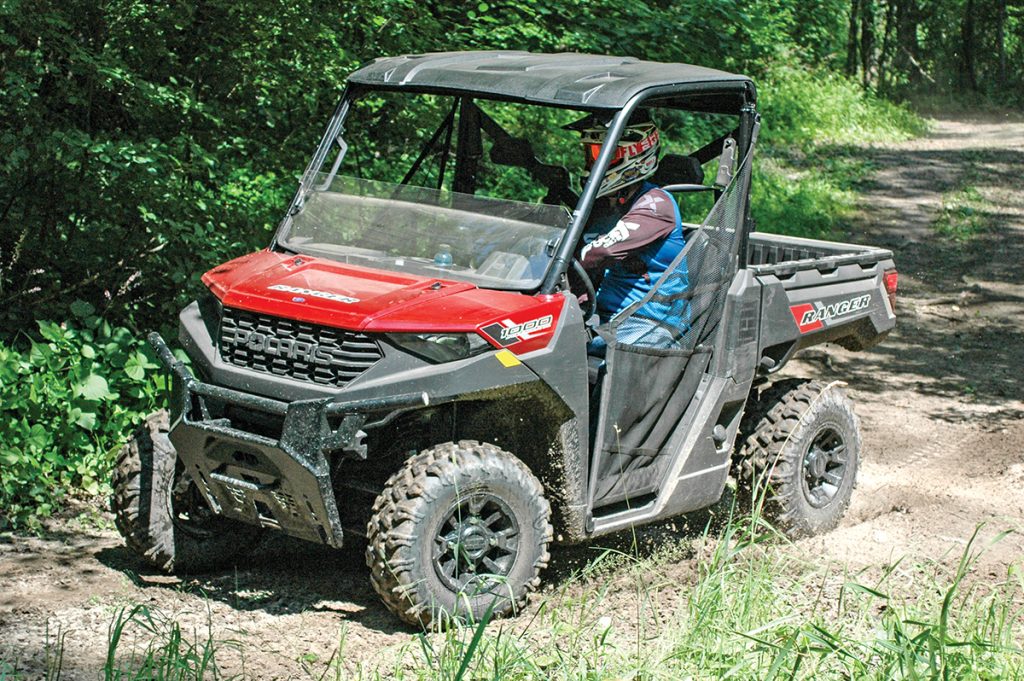
HOW DOES COST COMPARE?
The base Ranger 1000 is $12,999, just $300 more than the base 2019 Ranger XP 900. The base Ranger 1000 has steel wheels, unpainted bodywork and no power steering. The Ranger 1000 EPS is $13,999 and has power steering, steel wheels and unpainted bodywork. Our test unit, the Ranger 1000 EPS Premium, is $14,999 and comes with power steering, painted bodywork, a steel front bumper, an adjustable driver’s seat and cast-aluminum wheels. Prices for Polaris’ more powerful, more luxurious Ranger XP 1000 start at $16,899.
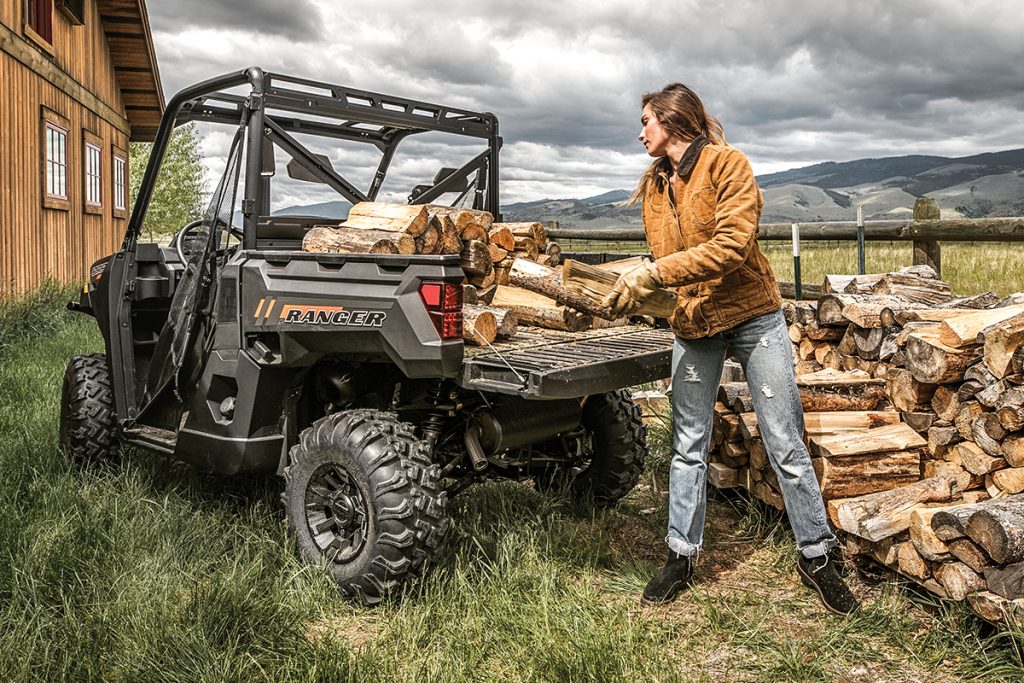
WHAT POWERS IT?
A 999cc, single-overhead-cam, two-valve-per-cylinder inline twin with 61 horsepower and 55 pound-feet of torque. That’s 7 horsepower less than the Ranger XP 900’s 875cc, four-valve-per-cylinder double-overhead-cam twin, but the Ranger 1000 is all about smooth, strong low and midrange power, not winning drag races.

IS THE TRANSMISSION NEW?
In many ways, yes. It’s a fully automatic, dual-range, belt-type CVT like the Ranger XP 900’s, but the clutching is tuned for more controllable power delivery. The Ranger 1000’s range selector has a smooth, positive action.
WHAT FEATURES DOES THE 4WD SYSTEM HAVE?
Everything the more expensive Ranger XP 1000 has. There’s selectable 2WD/4WD, and the front differential locks automatically as needed in 4WD. With the flip of a switch, you can lock the rear differential for more traction and unlock it for turf or tighter turns.
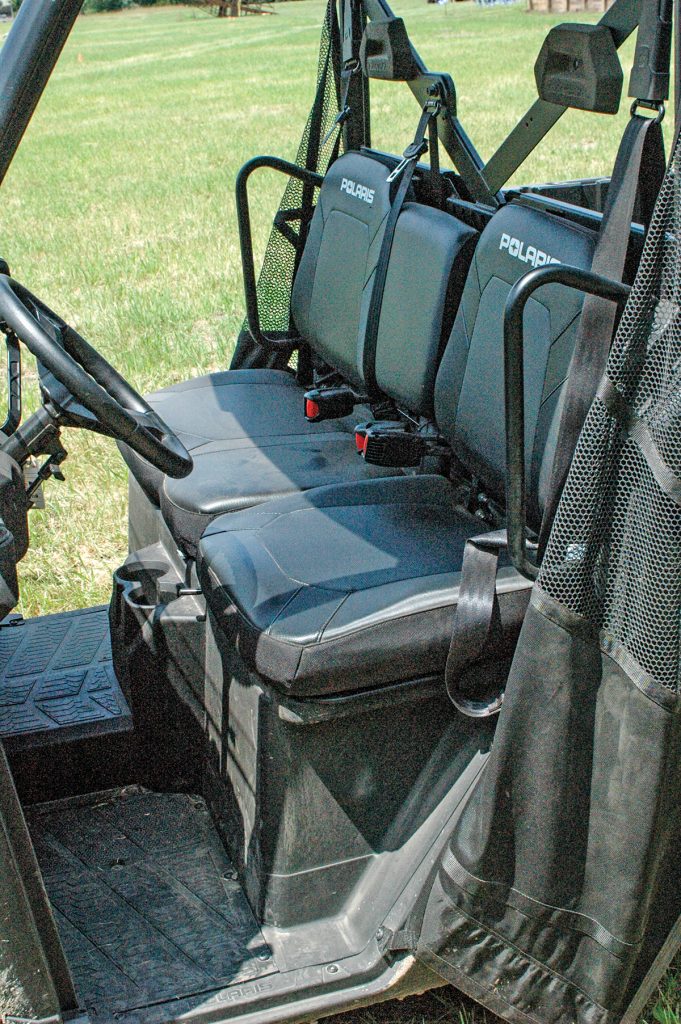
HOW FAST IS IT?
The Ranger 1000 accelerates hard if you want it to, and it tops out at 55 mph, plenty fast for covering ground in a hurry.
HOW IS THE POWER DELIVERY?
With peak torque 3000 rpm lower than the Ranger XP 900, the 1000 pulls hard without revving hard, which makes it feel more smooth and relaxed at the engine speeds recreation utility UTV drivers use more often. The all-new transmission’s clutching provides precise throttle response and very smooth engagement right off idle, just what you want on challenging trails and in precise maneuvers when doing chores. If you need a recreation utility machine with more top end thrust, there’s the 82-horsepower Ranger XP 1000.
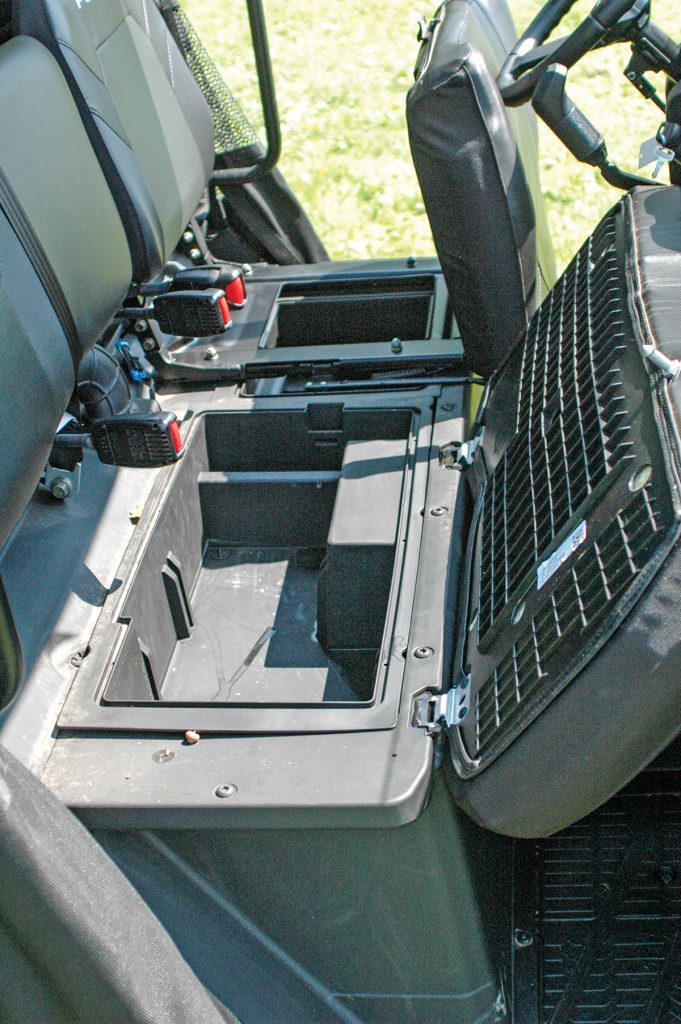
HOW IS THE SUSPENSION?
It’s impressively smooth and plush at sensible speeds, especially for a vehicle that can carry 1000 pounds in its tilting bed. The Ranger 1000 has 10 inches of travel front and rear, which lets it handle big impacts without bottoming. When unloaded, the Ranger’s ride can get bouncy at higher speeds on bumpy trails.
HOW DOES IT HANDLE?
It’s a full-size machine that handles like a smaller machine. It’s 62.5 inches wide with an 81-inch wheelbase, so it’s steady and stable, and the 1000 is a pleasure on tight trails and in confined spaces, thanks to its impressively tight turning circle and sure, easy cornering feel. The Ranger has a rear sway bar, but hard cornering brings out some body roll.
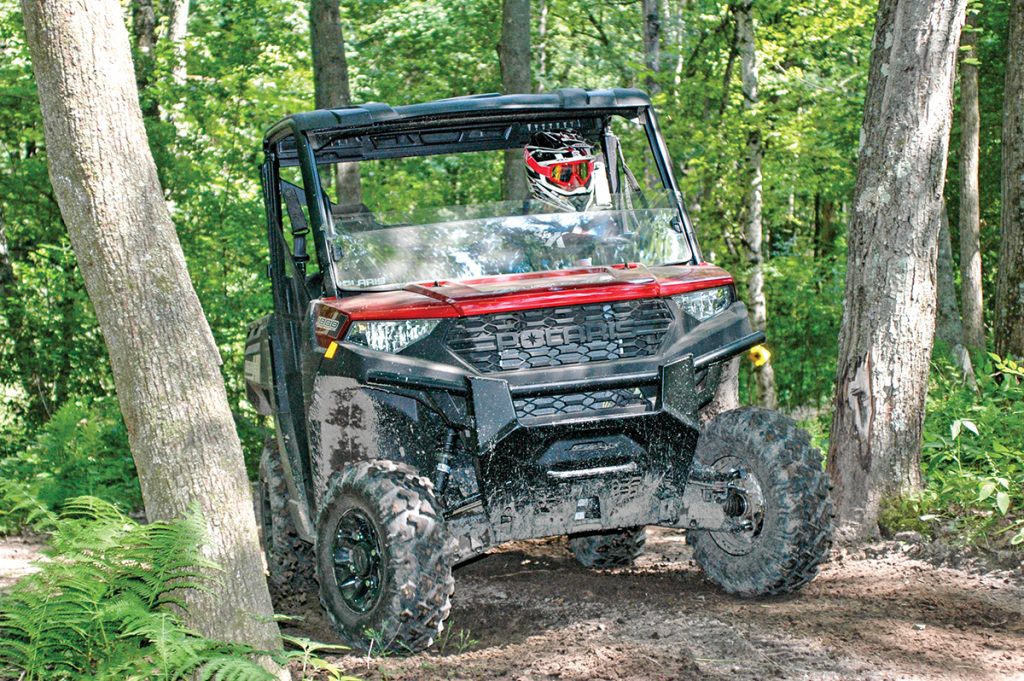
HOW IS IT FOR CHALLENGING TERRAIN?
The Ranger’s torquey power, smooth throttle response and 12 inches of ground clearance make challenging trails easy to navigate. New, aggressive Polaris PXT tires and the effective 4WD system provide excellent traction.
HOW ARE ITS WORK CREDENTIALS?
Impressive. The Ranger 1000 can carry 1000 pounds in its tilting bed, and the bed is an inch deeper than the Ranger XP 900’s, so it can carry more bulky material. The Ranger 1000 can tow 2500 pounds.

HOW ARE THE DETAILS?
Surprisingly good for an economy model. There’s nothing about the Ranger 1000 that reminds us that it’s a lower-priced 1000, though we were driving the nicely equipped Premium model. The good news is, the Ranger 1000 platform comes with most of the important details that make the vehicle such a pleasure to drive, like the smooth, quiet engine; the new smoother-operating, more durable transmission; and comfortable ride. The new, roomier cab is easier to enter and exit, and the seats have 25 percent more padding than the Ranger XP 900 and offer truly truck-like comfort. All Ranger 1000s also have a ton of storage space in the cab and under the seats. Serviceability is also excellent with a grille that’s easy to remove, an air filter that’s easy to service and maintenance-free suspension bushings.
WHAT IS OUR FINAL ANSWER?
We liked the Ranger XP 900 a lot, but we won’t miss it now that the new Ranger 1000 is here.
SPECS:
POLARIS RANGER
1000 EPS PREMIUM
ENGINE/TRANSMISSION
Engine type Liquid-cooled, 4-valve, SOHC inline twin
Displacement 999cc
Bore x stroke 93mmx73.5mm (2)
Compression ratio 10:1
Lubrication system Wet sump
Induction EFI
Starting/back-up Electric/none
Starting procedure In any range, brake engaged
Air filter:
Type Paper mesh/screen
Transmission Dual-range CVT
Drive system 2WD/4WD w/ locking diffs
Final drive f/r Shaft/shaft
DIMENSIONS/CAPACITIES/WEIGHTS
Fuel capacity 11.35 gal.
Wheelbase 81”
Overall length/width/height 120”/62.5”/76”
Ground clearance 12”
Dry weight 1537 lb.
Bed capacity 1000 lb.
Hitch 2-inch receiver
Towing capacity 2500 lb.
ROLLING CHASSIS
Frame Round steel tube
Suspension/wheel travel:
Front Dual A-arms & preload-adjustable shocks/10”
Rear Dual A-arms & preload-adjustable shocks/10”
Brakes:
Front hydraulic discs
Rear hydraulic discs
Tires:
Front 26×9-12 Polaris PXT 489
Rear 26×11-12 Polaris PXT 489
DETAILS
DC outlet Auto-style waterproof plug
Lighting:
Front 55W low/60W high headlights
Rear LED tail lights
Instrumentation Speedo/odo/tach/trip/hour/fuel/
gear position/diagnostics/clock
Colors Sunset Red Metallic, Matte Military Tan,
Matte Titanium
Minimum recommended operator age 16
Suggested retail price $14,999
Contact .Polaris, www.polaris.com
.
.


Comments are closed.